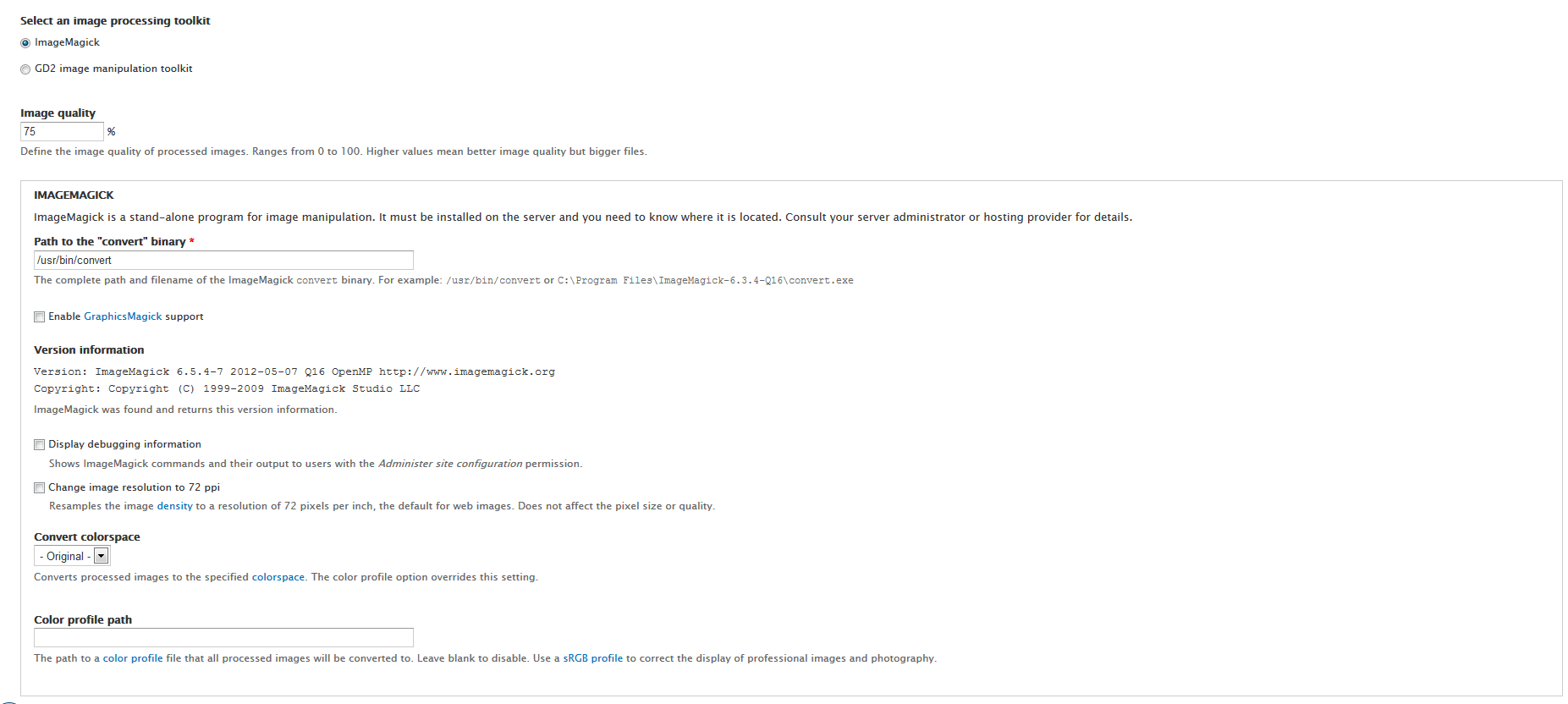
- #Imagemagick convert quality how to
- #Imagemagick convert quality install
- #Imagemagick convert quality software
- #Imagemagick convert quality code
Modified by adding a -scene number before the Such, if more than one image needs to be written, the filename given is Image per file, and in that case ImageMagick is forced to write each image as a separate file. However, some formats, such as JPEG and PNG, do not support more than one Images of an image sequence into the given output file. adjoin Join images into a single multi-image file. Otherwise noted, each option is recognized by the commands convert, mogrify. Option name in the navigation bar above and you will go right to it. If you want a description of a particular option, click on the Gm( "sample_image.jpg").Below is list of command-line options recognized by the ImageMagick command-line It returns all image data available: const gm = require( 'gm') GraphicsMagick provides several getters for retrieving information about images. Another option is to pass two integers for width and height with an optional background color to create a new image on the fly:.Buffer let imageFileBuffer = fs.readFileSync( 'sample_image1.jpeg') Gm(readableImageFileStream, sample_image) ReadableStream let readableImageFileStream = fs.createReadStream( 'sample_image1.jpeg') You can also pass a ReadableStream or Buffer as the first argument, with an optional filename for format inference:.By passing the path to the image as a string argument:.There are three ways in which you can call the gm constructor method. If you want to use this option, you'd need to import the subclass: const gm = require( 'gm').subClass() You also want to add an image to your folder that will be used in this tutorial, we'll name it sample_image.Īs mentioned before, the GraphicsMagick module allows you to use ImageMagick as well. We will also add the native file system ( fs) module to help us interact with the file system: const fs = require( 'fs') To use the module in the project, import it using require().
#Imagemagick convert quality code
Next, open the folder with your favorite code editor and create an index.js file.
#Imagemagick convert quality install
In this section, we will start with GraphicsMagick.Ĭreate a folder called node-graphics-magick, cd into the folder, initialize the Node project with default settings, and install GraphicsMagick as shown below: $ mkdir node-graphics-magick $ cd node-graphics-magick $ npm init -y $ npm install gm
#Imagemagick convert quality how to
In this tutorial, we will be learning how to work with images in Node.js using both GraphicsMagick and ImageMagick. Next, to add the module to your project, we'll use npm.įor ImageMagick: $ npm install imagemagickįor GraphicsMagick: $ npm install gm Image Processing in Node.js With GraphicsMagick Likewise, if the installation was successful, this will display the GraphicsMagick logo in a window.
#Imagemagick convert quality software
If it has been successfully installed, this will print out details of the installed software to the terminal.įor GraphicsMagick: $ gm convert logo: logo.miff $ gm convert logo.miff win:

If instead, you want to use ImageMagick, you need to install the ImageMagick CLI tool.Īfter downloading and installing the required CLI tool, you can check the version of your installation by running the following commands on your terminal. If you plan to use the GraphicsMagick module, you can either install the ImageMagick or GraphicsMagick CLI tools. You can also use ImageMagick directly from GraphicsMagick.


Installing GraphicsMagick and ImageMagickīefore installing either of these packages, you have to download and install the command-line interface (CLI) tools on your system. They are both available for use in Node.js as NPM packages: GraphicsMagick and ImageMagick. Some of the advantages GraphicsMagick has over ImageMagick include more efficiency, a smaller size, fewer security exploits and is generally more stable than ImageMagick. GraphicsMagick is a similar tool that was originally a fork of the ImageMagick project that has become an independent project of its own with several improvements. ImageMagick is an open-source image processing software for creating, modifying, and conversion of images. There are various libraries and binaries that are used for image processing in Node.js, two of which are GraphicsMagick and ImageMagick. As images have become an integral part of the web, the need for image processing becomes ever-present.


 0 kommentar(er)
0 kommentar(er)
